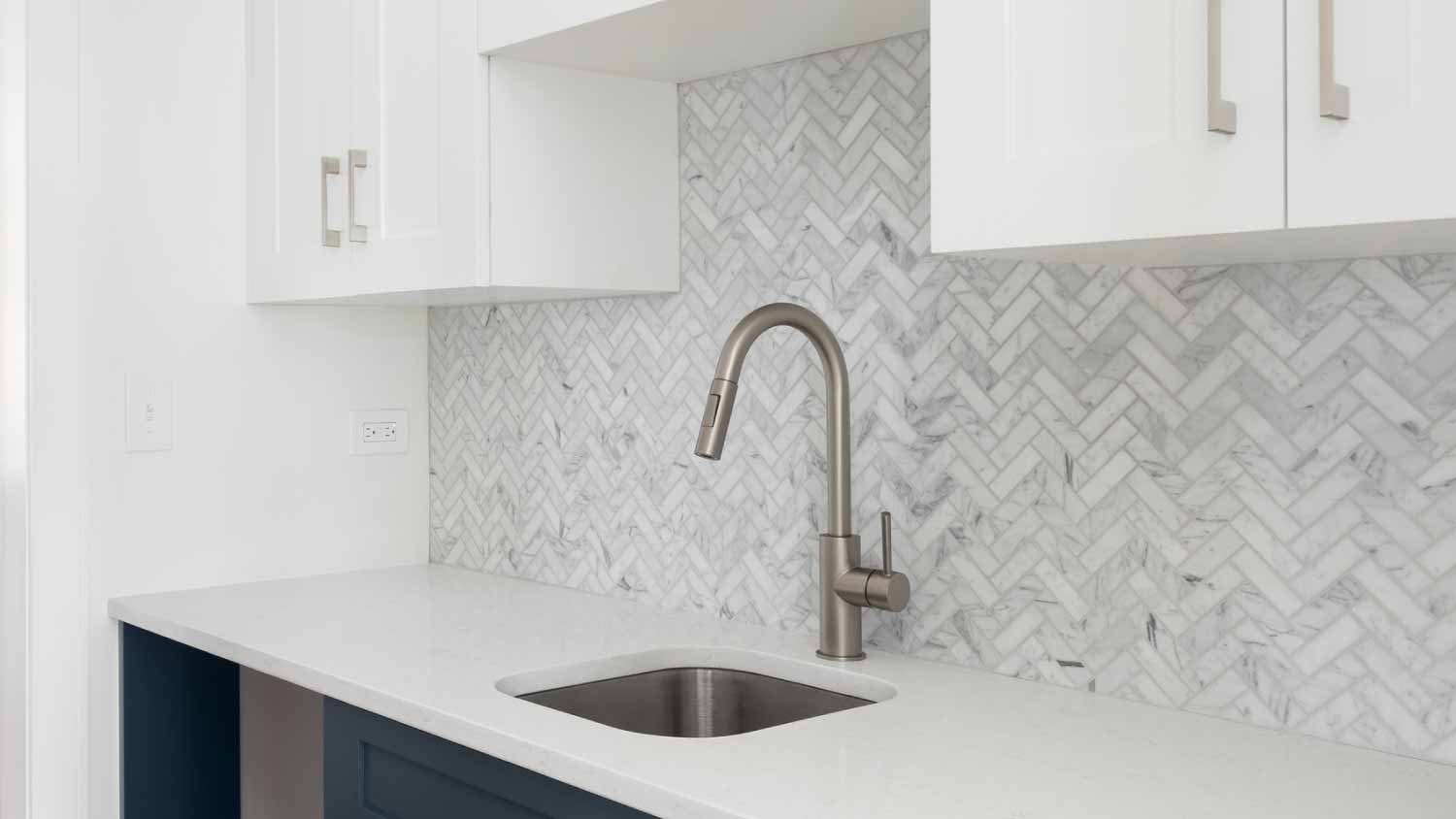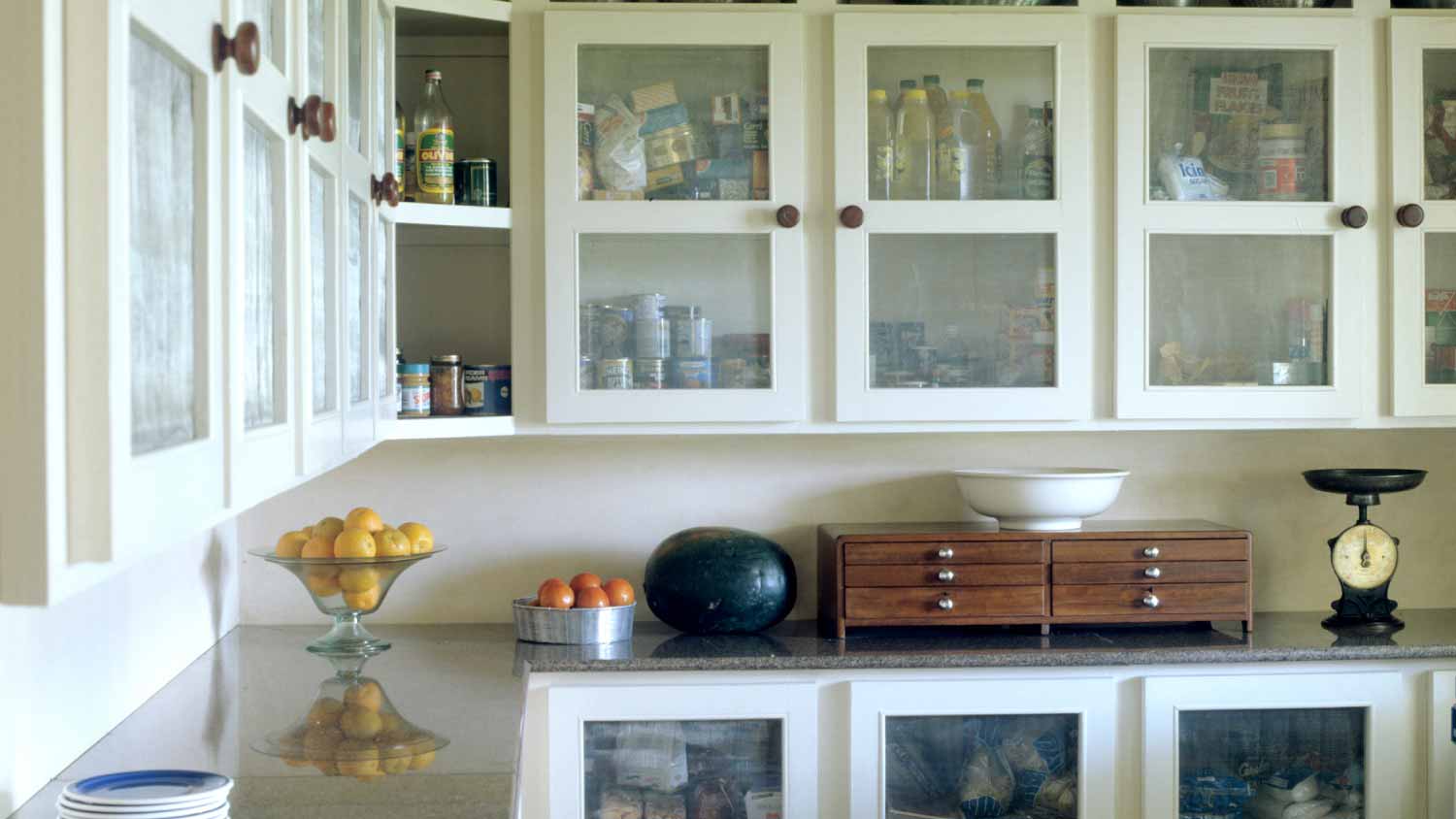
Remodeling your bathroom can add significant value to your home. Your bathroom remodel cost will depend on size, fixtures, materials, labor, and other factors.
Out of sight, out of mind, and perfectly organized


Both sculleries and butler’s pantries are larger than the average walk-in pantries.
A scullery commonly includes a sink, a dishwasher, a cooktop, and a microwave.
Butler’s pantries cost less but are limited to just storage and countertops.
If you’re embarking on a kitchen renovation, odds are you’ve wondered how to pump up your pantry. Two old-school types of pantries, sculleries and butler’s pantries, are currently having a huge moment—but what exactly is the difference between them? Both offer a space outside your main kitchen for everything from prepping to storage, but there are other key features that distinguish one from the other. Here’s what to know when it comes to a scullery vs. butler’s pantry.
The biggest difference that sets a scullery apart from a butler’s pantry is its larger size. A scullery is sort of a mini kitchen that’s often equipped with many of the same features, like plumbing, counter space, microwaves, and cooktops.
By contrast, a butler’s pantry is a bit of a luxurious walk-in pantry, with plenty of space for storage, one or two countertops for behind-the-scenes prep, and not much else.
A scullery is also more likely to be located down a hall, whereas a butler’s pantry is often attached to the main kitchen. Of course, that all depends on whether your property already has one of these. If you’re renovating, you can decide where to put it.

Let’s dive deeper into what a scullery is. These old-fashioned pantries originated in England and Ireland and were first used as a place for overflow kitchen work or doing laundry, often by domestic workers for aristocratic families. But that all changed when the trend hopped over the pond. Stateside, the term is now exclusively used to define pantries that are basically tiny kitchens used for food prep and cleanup. They tend to include plumbing features like sinks and dishwashers, large appliances like microwaves and cooktops, and enough space to store anything from a vibrant, multi-colored KitchenAid collection to all the food that won’t fit in your kitchen cabinets.
| Pros | Cons |
|---|---|
| Storage for both cooking and food items | Most expensive option |
| Includes plumbing | Requires more square footage |
| Can accommodate all food preparation | Located farther from the main kitchen |
Best for:
Avid home cooks with nowhere to put all their kitchen appliances.
Meticulous organizers who love clear kitchen counters.
Homeowners who frequently entertain.
Sculleries come with many advantages, from having more room for food and cookware storage, to providing an out-of-sight space for throwing together hors d'oeuvres for a dinner party.
Large enough for prepping food: This type of pantry is so large you could prepare an entire meal in it, and it’ll be your saving grace on holidays like Thanksgiving when the oven in your main kitchen is fully booked up.
Includes plumbing features: Prepping food is hard to do if you don’t have easy access to a faucet for rinsing things off as needed, but a scullery can have that and more—like an extra dishwasher.
Plenty of storage for food and large appliances alike: Anything that you don’t have room for in your main kitchen cabinets or that you’d rather not leave on the counter will be right at home in a scullery.
Although they have a lot of perks, there are a handful of reasons why you may not choose a scullery.
Costs more than a butler’s pantry: The cost to build a walk-in pantry with nothing but cabinets already ranges from $2,500 to $3,000, but you can expect to pay $5,000 or more for a simple scullery. The price can increase to $15,000 for a more spacious scullery with several high-end appliances.
Takes up more space in a home: If you’re already tight on square footage, it may be hard to find the space necessary for a mini-kitchen.
Farther from the main kitchen: If you’re considering buying a home that already has a scullery in it, keep in mind that it might be a bit of a walk from your main kitchen.

A butler’s pantry was traditionally a space where a butler would put the finishing touches on a meal. Now, it’s a great spot for storing surplus food and small appliances and plating meals like a butler might have once done. This type of pantry is larger than the average walk-in but smaller than a scullery and often only has cabinets, shelves, and one or two countertops for last-minute prep, like dicing herbs. Don’t expect to be able to do any actual cooking in a butler’s pantry.
| Pros | Cons |
|---|---|
| Extra storage for food | Too small for large appliances |
| Lower cost than a scullery | Doesn’t always have plumbing |
| Easier access from the main kitchen | Extensive food prep is not possible |
Best for:
Homeowners with overflowing cabinets.
Anyone who needs a bit of extra counter space.
Don’t write off butler’s pantries simply because they’re smaller than sculleries. These kitchen additions have a lot of advantages that make them just as worthy of consideration.
Less expensive than a scullery: While pricier than a walk-in, the cost of pantry like this is significantly lower than what you’ll pay for a scullery because it’s smaller and won’t contain as many expensive appliances.
Extra storage for food and small appliances: A butler’s pantry may not provide as much storage space as a scullery, but it does offer more than what you’d get from a regular walk-in pantry.
Located close to the main kitchen: Running to and from a scullery is a pain when trying to get dinner on the table, but you won’t have a problem like that with a butler’s pantry.
There are a handful of reasons why a butler’s pantry may not be for you.
Large appliances may not fit: Butler’s pantries have enough space for either overflow food or excess appliances, but not necessarily both.
Plumbing isn’t always included: While the lines between a butler’s pantry and scullery have begun to blur, plumbing isn’t guaranteed in all butler’s pantries.
Not possible to cook food: Because there’s no space for large appliances like a cooktop or microwave, cooking food in this space alone is a non-starter.
Still not sure which type of pantry to pick? Here’s which one comes out on top when pitted against each other.
Butler’s pantries may not have as many features as a scullery, but they can’t be beaten for how much they offer at a lower price point. A butler’s pantry starts at around $3,000, whereas a scullery costs at least $5,000.
Although both a scullery and butler’s pantry can be designed to suit your personal preferences, there’s just no beating the former in terms of size and scale. When you have more room to decorate, you also have more room to get creative and make it look beautiful.
There’s just so much you can do with a scullery that can’t be done with its competitor, including everything from increasing your pantry dimensions to installing plumbing.
A butler’s pantry is the most DIY-friendly because it involves no complicated plumbing or large appliance installations. If you have a small spare room adjacent to your kitchen, you can set up shelving and storage areas yourself. If you’re particularly handy, you can build some countertop space, too.
There’s not a lot of data on whether or not a scullery or butler’s pantry will improve resale value. Although you might appreciate having a second kitchen space, interested buyers may have preferred it in its original state—whether that was in the form of a laundry room or simply an extra closet or hallway. On the other hand, some may be willing to pay more for a feature like this, especially if it’s decked out with the finest appliances. At the end of the day, it will all depend on who’s considering your home.
From average costs to expert advice, get all the answers you need to get your job done.

Remodeling your bathroom can add significant value to your home. Your bathroom remodel cost will depend on size, fixtures, materials, labor, and other factors.

Building a guest house is one of the largest home projects and involves several different professionals. Learn about the cost to build a guest house and where you can save.

Accurately plan your project budget with this kitchenette cost breakdown and know where to save or splurge. Here are key factors for how much it costs to install a kitchenette.

What is a range in a kitchen, and which is best for your cooking needs? Learn about the various types of kitchen ranges and what to consider before buying one.

Make choosing your toilet seat a cinch using this guide. Learn about different toilet seat types, shapes, materials, and features.

Debating which type of kitchen layout is best for your home? Check out our guide to 7 kitchen layouts and tips for designing your kitchen.